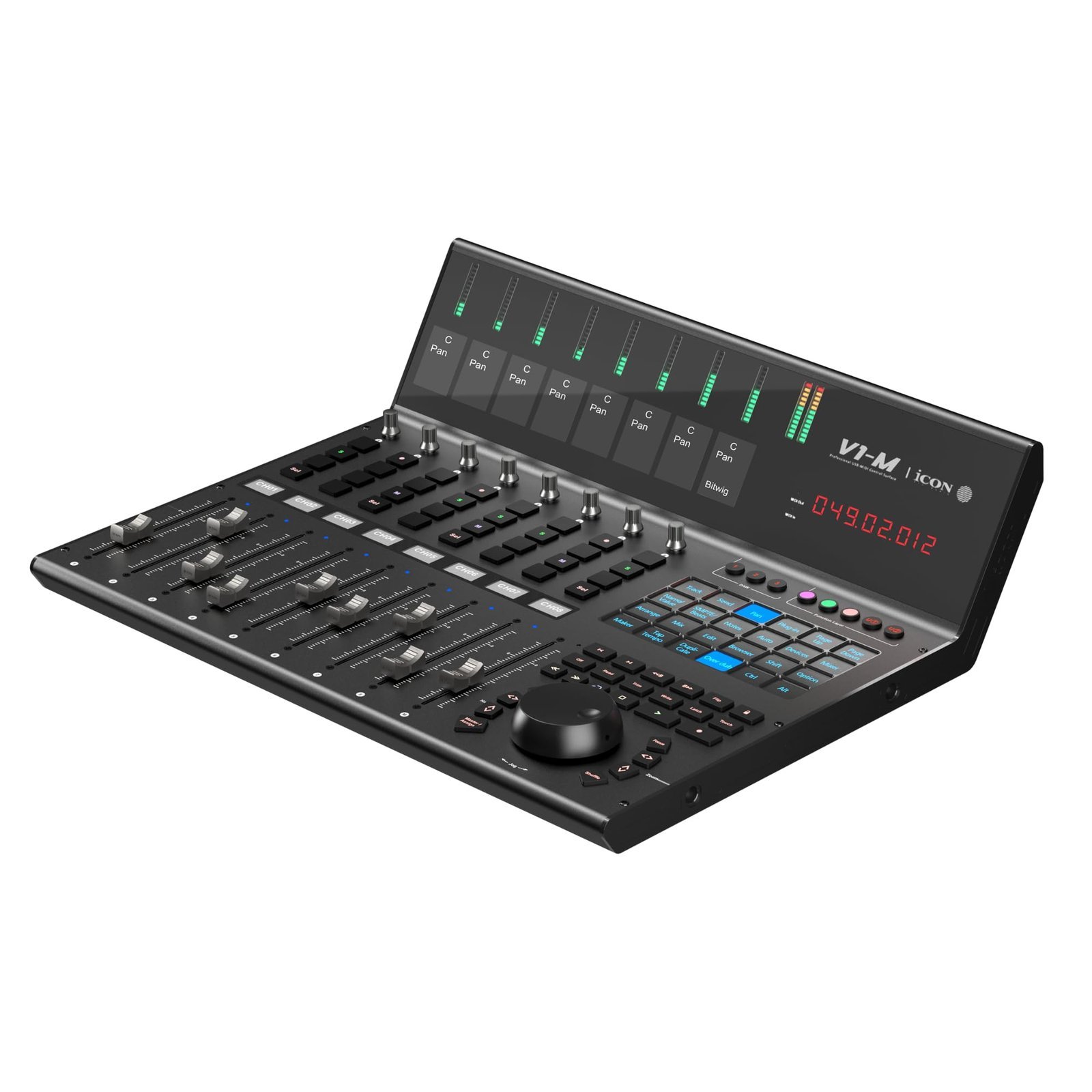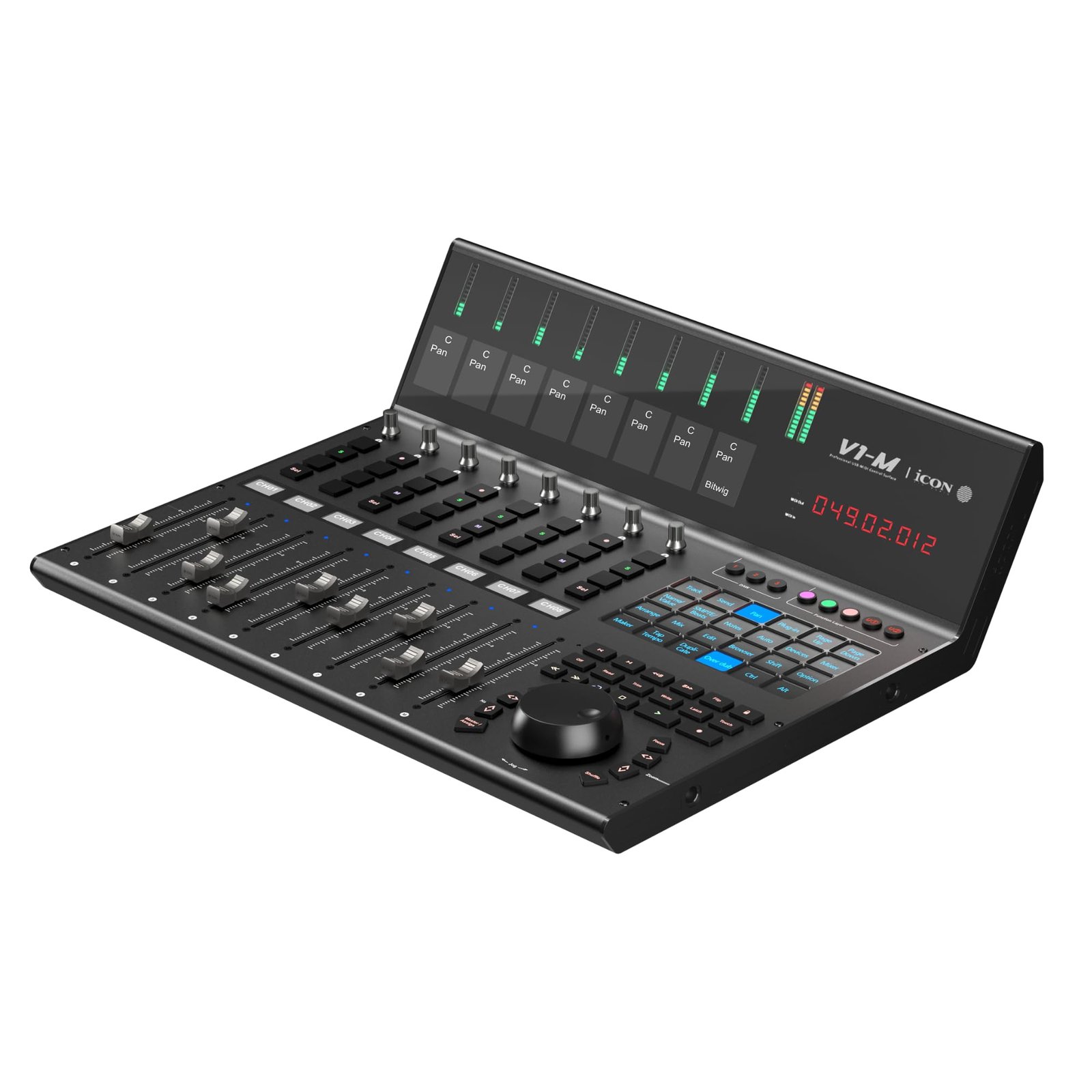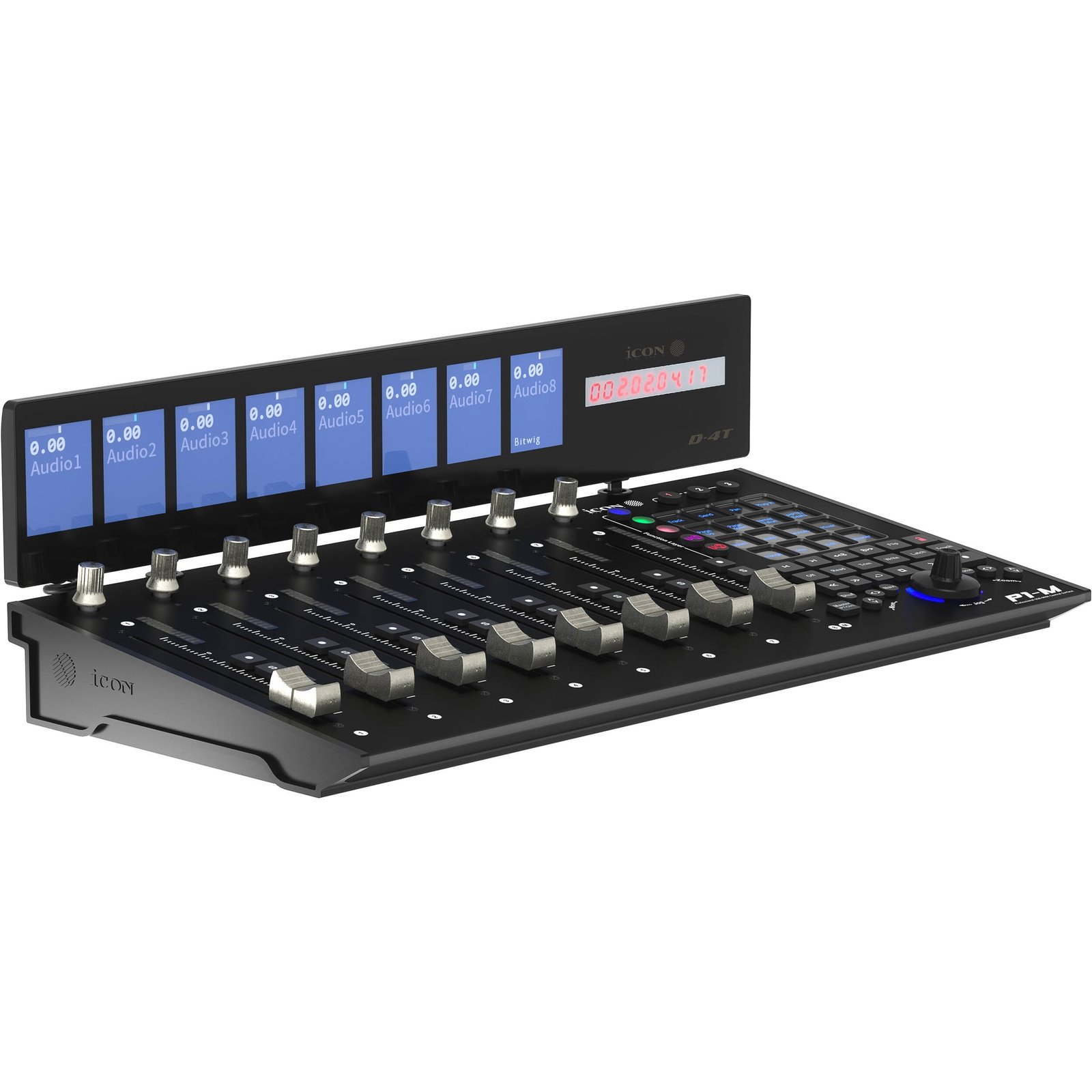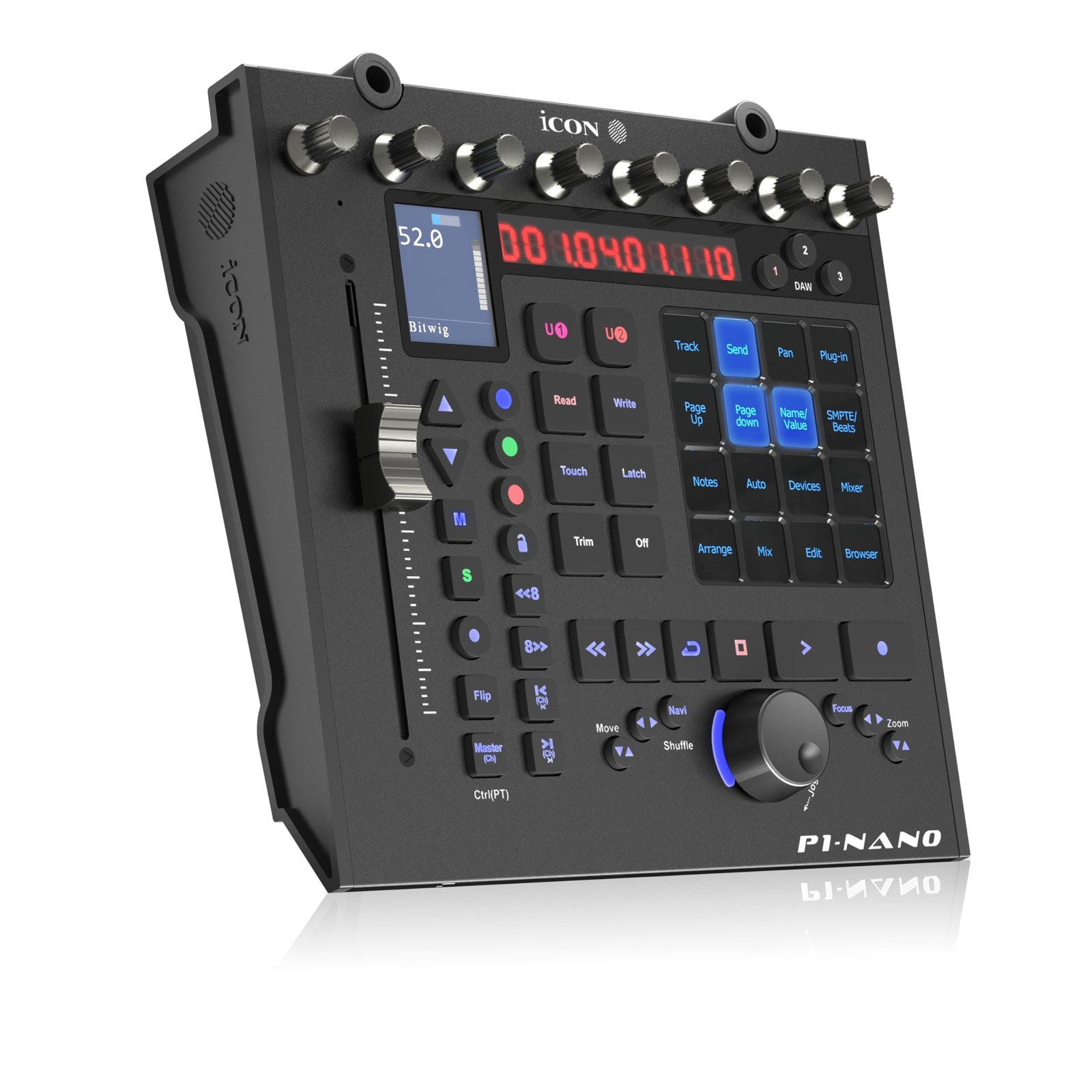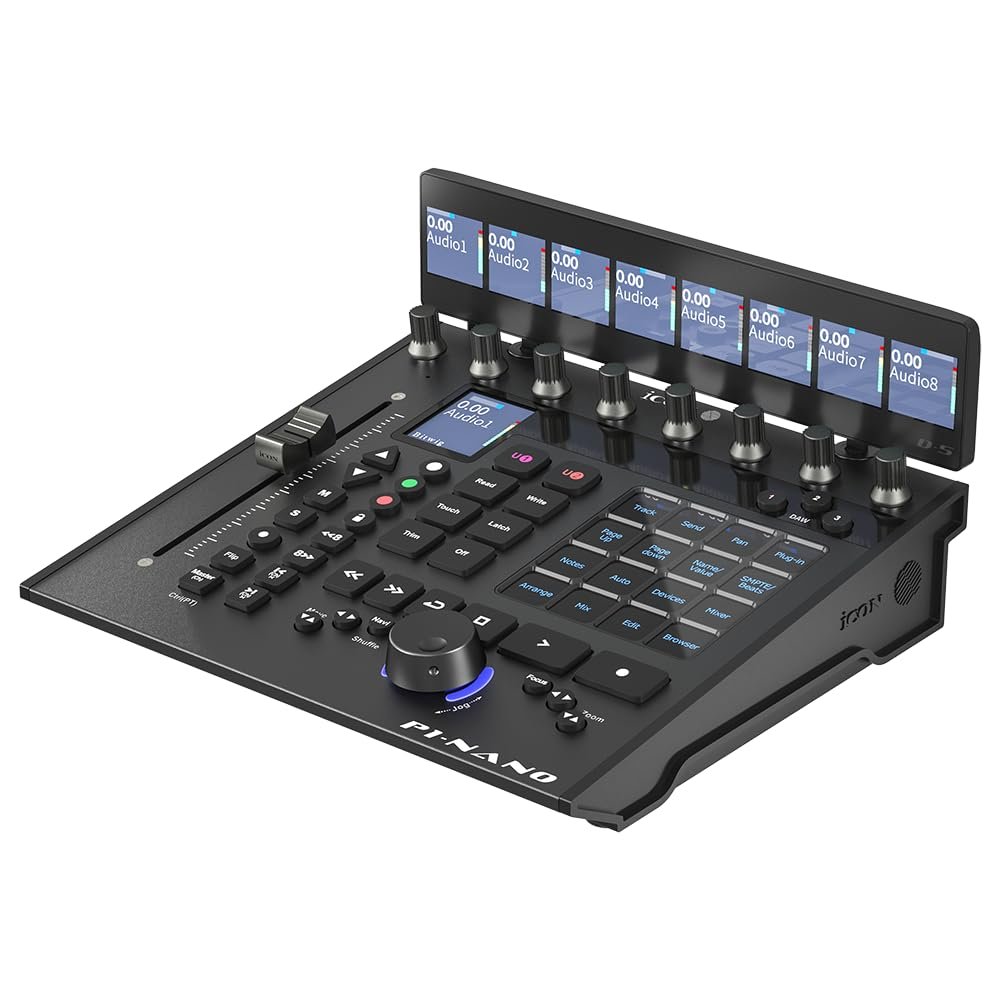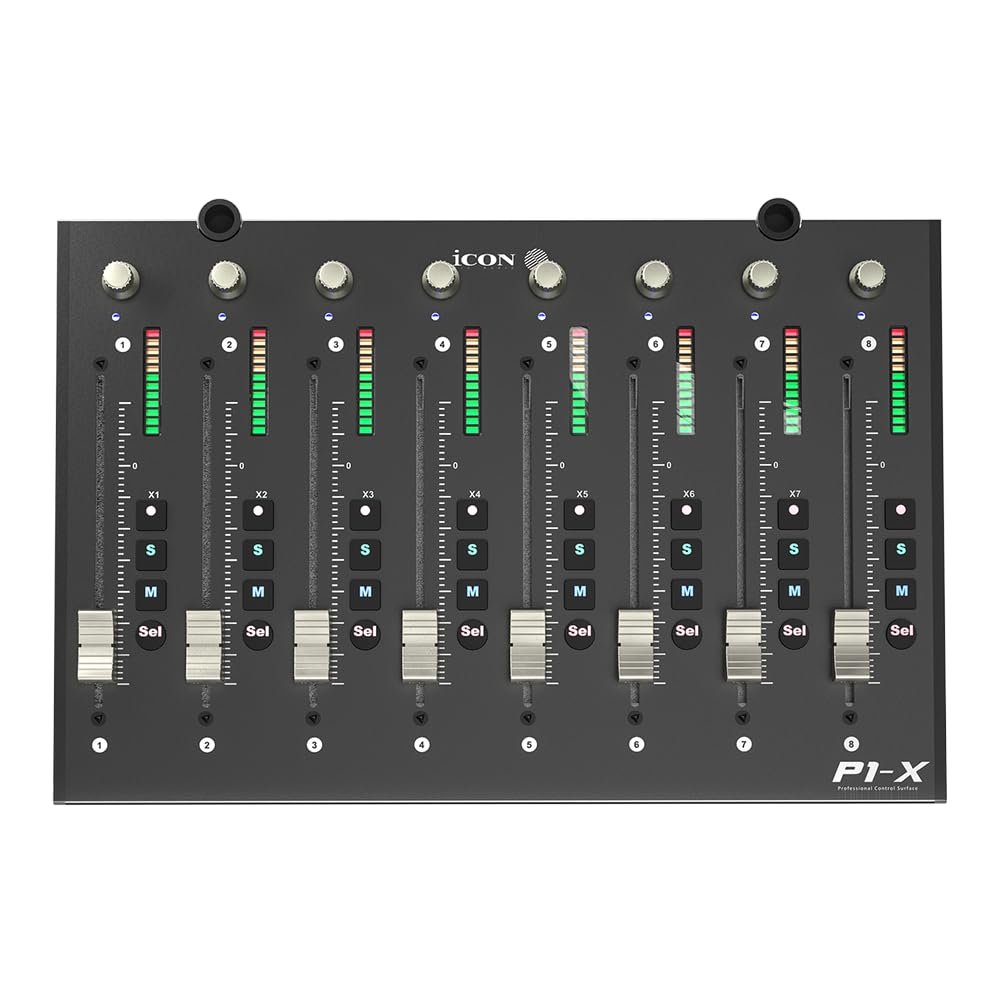In recent years, music production has seen a rise in the use of touchscreen control surfaces.
These surfaces offer a more intuitive and hands-on approach to navigating mixing software and managing complex soundscapes.
As music producers increasingly seek tactile interfaces that emulate the tangible feel of traditional equipment, touchscreen control surfaces provide an innovative solution, blending digital precision with physical interaction.
Touchscreen control surfaces allow us to manipulate sounds with a few taps, swipes, and pinches.
These interfaces can be configured to suit personal workflows, making them suitable for both seasoned professionals and budding artists.
Whether we’re adjusting levels, modifying effects, or using virtual instruments, the right touchscreen control surface can streamline our entire production process.
When selecting a touchscreen control surface, we should consider compatibility with our existing software and hardware, the size and resolution of the touchscreen, and the responsiveness of the touch interface.
Additionally, checking whether the surface has the necessary connectivity options and whether it supports custom configurations can make a significant difference.
By keeping these key factors in mind, we can find a control surface that not only meets our needs but also enhances our creative process.
Top Touchscreen Control Surfaces for Music Production
We’ve put together a list of our favorite touchscreen control surfaces designed for music production.
Whether you’re just starting or you’re a seasoned pro, these tools can enhance your creative workflow.
Let’s dive into the best options out there!
iCON V1-M Touch Controller
For those looking to improve their music production setup, the iCON V1-M offers some impressive control features and a sleek design.
- Expansive motorized fader control
- Seamless integration with popular DAWs
- Versatile customizable touchscreen
- Initial setup can be tricky for some users
- Not the most budget-friendly option
- Limited user feedback
The iCON V1-M is perfect for producers who love having hands-on control over their digital audio workstations.
The motorized faders are quick to respond and offer a level of precision that’s hard to beat.
We like how they expand to match your growing project needs seamlessly.
Another feature that makes the V1-M stand out is its compatibility with a range of DAWs like Ableton Live and Logic Pro X. It’s impressive how it can connect to multiple DAWs, making it versatile for different project requirements.
The customizable touchscreen is another bonus, providing easy access and workflow improvements.
On the flip side, the initial setup of the V1-M can be challenging for newcomers.
It may require some patience, especially for those who haven’t worked with such advanced controllers before.
It’s also less affordable compared to some other options, which might not make it the first pick for those on a tight budget.
iCON P1-M DAW Control Surface Bundle
The iCON P1-M is a versatile tool that’s perfect for enhancing our music production workflow through its innovative touchscreen and comprehensive controls.
- Streamlines music production with robust DAW integration
- Customizable touchscreen for flexible setup
- Durable build with motorized faders
- Initial setup can be complex
- Limited portability due to weight
- Requires separate purchase for full expansion
This control surface really brings a wealth of features to our fingertips, making it easier to manage multiple DAWs all at once.
The motorized faders move automatically, giving us a tangible sense of control and precision that can make a big difference.
What stands out is the touchscreen, which offers customizable options to tailor the controls to our specific needs.
It’s built to last with its robust metal casing, which is something we find reassuring for regular studio use.
On the flip side, the complexity of the setup might be a hurdle for those not familiar with advanced audio gear.
It’s worth considering the added weight if we’re on the go often.
Despite this, the enhanced productivity it promises makes it an intriguing choice for any serious producer.
iCON P1 Nano Control Surface
If you’re in the market for a compact, feature-packed DAW controller, the iCON P1 Nano could be what you need due to its robust functionality and portability.
- Compact and portable, great for small spaces
- Seamless integration with multiple DAWs
- Customizable touchscreen display
- Occasional connectivity issues with newer Macs
- Firmware updates can be tricky
- Support needed sometimes to resolve setup problems
This control surface is compact and lightweight, making it perfect for both studio and on-the-go production setups.
With its touch-sensitive motorized fader and customizable 4-inch touchscreen, the P1 Nano offers a user-friendly interface that allows us to streamline our creative processes.
The device excels in compatibility.
It works well with major DAWs like Ableton Live and Pro Tools, allowing us to control multiple workstations simultaneously.
This multifunctionality is a significant advantage if we like to switch between different software during our sessions.
A few users have faced difficulties with firmware updates and connectivity on newer Mac models.
Despite these minor drawbacks, the P1 Nano remains a strong contender in the market, especially considering its solid build and versatile control features.
iCON Pro P1 Nano Bundle
Looking for a compact and capable control surface to boost our music production experience? The iCON Pro P1 Nano Bundle offers a lot of features packed into a small package.
- Compact and portable design perfect for small spaces
- High compatibility with multiple popular DAWs
- Customizable touchscreen to fit our workflow
- Limited touch-sensitive fader resolution
- Can be complex to set up initially
- May not offer enough channels for more extensive projects
The iCON Pro P1 Nano Bundle combines portability with a plethora of features, making it an appealing choice for anyone limited by space but high on ambition.
The 4-inch customizable touchscreen is a standout feature, letting us adjust the surface to suit our needs and organize our workspace for maximum efficiency.
This control surface isn’t just about the look and feel.
Its ability to integrate with the majority of popular DAWs like Ableton Live and Logic Pro X really opens up our options without requiring multiple setups.
The touchscreen layers and motorized fader help keep us focused on creativity rather than tech hiccups.
A challenge with the P1 Nano might be its complexity when setting it up for the first time, but once it’s running, the smooth workflow can truly enhance a project.
Despite some limitations, if compact size and versatility are priorities for us, this could be worth considering.
iCON Pro Audio P1-X Extender
Those looking to extend their music production capabilities with precision control might find the iCON P1-X Extender a compelling option.
- Seamlessly enhances your existing iCON setup.
- High-resolution touchscreen offers intuitive navigation.
- Built to last with a sturdy metal design.
- Exclusively designed for use with P1-M, limiting standalone functionality.
- Initial setup requires the P1-M DAW control surface.
- Physical connectivity limited to USB-C only.
With the iCON Pro Audio P1-X Extender, we’ve got our hands on a tool that expands our mix possibilities brilliantly.
The eight touch-sensitive faders allow us precise control that feels just right under the fingers.
Added bonus: the option to illuminate essential buttons that we often need at a glance.
Setup is quite straightforward, especially if we’ve got the P1-M DAW Control Surface already.
This extender integrates seamlessly, giving us that bit of extra tactile control we crave while working on projects.
The smooth integration with popular DAWs adds flexibility to our workflow.
Reliability is a key strength here.
Thanks to its robust build and modern connectivity features, we feel confident about its durability and performance.
For any music production enthusiast looking to take their efficiency up a notch, this might just be the peripheral that drives it home.
Buying Guide
When we’re on the hunt for a touchscreen control surface for music production, a few key features catch our eye.
Let’s break it down so we can make a smart choice.
Screen Size and Resolution
We should think about how much screen real estate we need. Larger screens give us room for more controls, while higher resolutions provide clearer visuals.
It’s all about finding that sweet spot between size and clarity.
Multi-touch Capability
Multi-touch capability is crucial.
Being able to use multiple fingers allows us to control several parameters simultaneously, similar to traditional hardware consoles.
It’s magic when we’re in the flow of creativity.
Compatibility
Compatibility matters.
We should check if the control surface plays nicely with our existing gear and software.
Look for surfaces that support common DAWs or have customizable interfaces.
Connectivity Options
How will all our devices connect? USB and wireless options offer flexibility, while MIDI compatibility is essential for connecting a variety of music gear.
Our setup might dictate our choice here.
Build Quality and Portability
Let’s not forget about durability.
A sturdy build will last longer, and if we travel or gig, a lightweight option might be worth considering.
Portability can be a big plus.
Budget
Lastly, here’s a quick snapshot to guide us on pricing:
| Feature | Budget Level | Notes |
|---|---|---|
| Basic | Low | Minimal features, entry-level |
| Mid-range | Moderate | Good balance, quality essentials |
| High-end | High | Advanced options, professional |
It’s wise to weigh these factors to find our ideal touchscreen control surface.
Frequently Asked Questions
Let’s clear up some common queries about touchscreen control surfaces for music production.
We’ll discuss motorized faders, specific recommendations for Logic Pro X, the necessity of control surfaces, and more.
What’s the deal with motorized faders on DAW controllers?
Motorized faders are an amazing feature on DAW controllers.
They move automatically to match your DAW settings, giving us a tactile feel that mirrors what’s happening on the screen.
They’re great for precise adjustments and help us keep track of changes across different sessions easily.
Any recommendations for the best control surface for Logic Pro X?
For Logic Pro X users, the Novation Launchpad Pro and Akai Professional APC40 are highly recommended.
These are user-friendly with excellent integration, making music production seamless.
Another great option is the Icon QCon Pro X, which provides good value and deep integration with Logic Pro X.
How essential is a control surface to home studio setup?
A control surface isn’t strictly essential, but it can be incredibly helpful.
For those of us who crave hands-on control and efficient workflow, it makes a huge difference.
It’s about enhancing our interaction with the DAW, which can be especially handy during complex projects.
Can you explain what a MIDI control surface does?
A MIDI control surface acts as an external, physical interface for controlling software parameters in our DAW.
It can handle everything from volume and effects to triggering loops and samples.
The tactile experience can streamline our workflow and reduce time spent clicking through virtual menus.
Got any tips for choosing a mixing control surface?
When picking a mixing control surface, consider our workflow needs and the DAW we use.
Look for good software integration and check the number of faders and knobs.
Portability might matter if we’re often on the move.
Also, user reviews can offer insights on long-term reliability and ease of use.
Are there touch control surfaces that work with all major DAWs?
Some touchscreen control surfaces are designed to be versatile and work with most DAWs, including Ableton Live and Cubase.
The Avid S1 and Slate Raven offer compatibility with major DAWs, giving us flexibility if we switch between different software environments.

